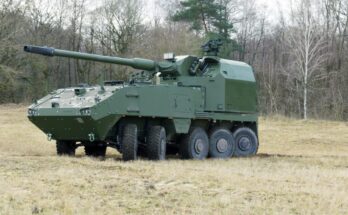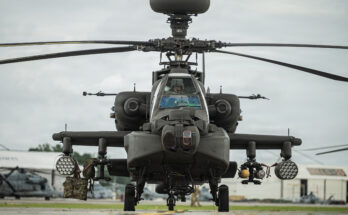Raytheon has won the U.S. Army’s Lower Tier Air and Missile Defense Sensor (LTAMDS) competition, and will deliver a new radar to replace the existing MPQ-65A Patriot radar. As the MPQ-65 manufacturer, Raytheon was the incumbent bidder against Lockheed Martin and Northrop Grumman.
Raytheon was awarded a $384 million contract to build, test, and deliver six production radars by the end of FY22. The contract is a “firm-fixed-price Other Transaction Authority (OTA)” agreement, reflecting the program’s status as a rapid prototyping effort. OTA agreements offer additional flexibility during the development process. A follow-on production decision will be made after the prototypes have been delivered. The Army operates more than 60 MPQ-65 radars across 15 Patriot battalions.
NEWS: @USArmy selects Raytheon for Lower Tier Air and Missile Defense Sensor. Learn more about #LTAMDS: https://t.co/HDR7FOyURO pic.twitter.com/V2FNVylNIa
— Raytheon (@Raytheon) October 17, 2019
Raytheon’s winning system is a gallium nitride (GaN) powered active electronically scanned array (AESA) radar that provides 360-degree coverage. The Army actually dropped its requirement for 360-degree coverage, as the service said it would focus on integrating various sensors on the battlefield to simulate 360-degree awareness. However, Raytheon maintained the 360-degree capability in its offering. The system will still operate within the Army’s Integrated Air and Missile Defense Network, meaning the new radar will be able to communicate with the Army’s other air defense systems. Raytheon’s radar also meets all of the Army’s mobility requirements, including the ability to fit in a C-17 transport aircraft.
Raytheon’s team of suppliers includes Crane Aerospace & Electronics, Cummings Aerospace, IERUS Technologies, Kord Technologies, Mercury Systems, and nLogic.

The Army took a somewhat roundabout approach to selecting a new radar. In 2017, the service awarded development contracts to Lockheed Martin, Northrop Grumman, Raytheon, and Technovative Applications. In September 2018, Lockheed Martin and Raytheon were selected to proceed to the technology maturation and risk-reduction phase.
However, the Army subsequently launched a LTAMDS “sense-off,” which was technically separate from the LTAMDS program of record described above and was open to additional contractors. That sense-off became the focus of the Patriot radar replacement. Raytheon, Northrop Grumman, and a team of Lockheed Martin and Elta Systems participated in the sense-off in May and June 2019.
The Army requested $427.8 million in FY20 for LTAMDS development, well above the $125.8 million originally planned. A total of $1.5 billion is set aside through FY24.
Shaun's deep-rooted interest in military equipment continues in his role as a senior defense analyst with a focus on the United States. He played an integral role in the development of Forecast International's U.S. Defense Budget Forecast, an interactive online product that tracks Pentagon acquisition programs throughout the congressional budget process. As editor of International Military Markets – North America, Shaun has cultivated a deep understanding of the vast defense markets in the United States and Canada. He is a regular contributor to Forecast International's Defense & Security Monitor blog and has co-authored white papers on global defense spending and various military programs.




